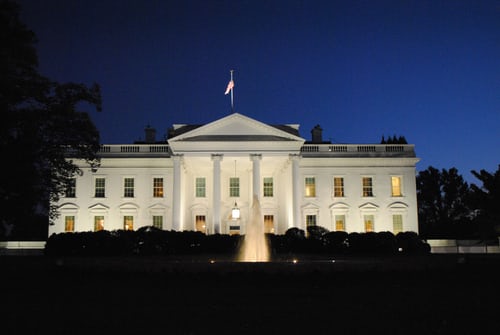Biden Holds a Two Day Climate Summit
President Biden invited 40 world leaders, business executives, and others for a two day meeting on the future of America’s fight against climate change.

The symbolic power of the White House carries with it a responsibility to lead not just Americans, but to serve as an example for the whole world.
On April 22nd, 2021, President Biden started a two day summit meeting with the ultimate goal of creating a new slate of emissions commitments for the United States. He hoped that his promises would incite similar proclamations from other countries.
In a move to prove his commitment to fulfilling his campaign promises, Biden reentered the Paris accords on his first day in office. The Paris Agreement was a treaty signed back in 2015 by 191 countries in an attempt to limit global temperature increase to less than 2 degrees Celsius. It has broad stipulations for how this goal is to be achieved, which is why it is generally referred to as a first step. During his term in office, Donald Trump withdrew from the agreement, prompting both international and domestic criticism. Even though Trump did not formally leave the Paris accords until after he had lost his reelection bid, Biden made reentering the agreement a staple of his climate change platform.
The first day of the climate summit was a largely diplomatic event that featured all 17 member states of the MEF, the Major Economies Forum on Energy and Climate Change. Biden started the meeting with an ambitious promise to reduce U.S. carbon emissions to half of what they were in 2005 by 2030. This proclamation perfectly fits with the structure of the Paris Agreement, which asks its constituents to make their own plans to achieve net zero emissions by 2050. Biden also reiterated his commitment to an “all-of-government” approach to achieving this goal, explaining that every single department would have to be involved in going green.
Although the fate of Biden’s two trillion dollar infrastructure plan is still unknown as it still faces a barrage of Republican attacks, the bill will undoubtedly include measures to enact the promises Biden made during the summit. One of these measures is funding the transition from coal to green energy. A portion of the bill will go towards hiring workers to fill up coal mines and creating infrastructure for solar, wind, and hydropower.
In addition to these construction projects, Biden announced his support for a number of other green initiatives. These include joining global partnerships such as the Zero Emission Vehicle Transition Council, a partnership of countries with the goal of speeding up the transition to zero emission vehicles. Aside from bilateral moves, Biden also committed the U.S. to preserving natural forests domestically and abroad.
Although some of the biggest culprits of pollution did agree with Biden on the importance of going carbon neutral, their words will carry very little weight until they back them with substantive action. For example, even though Chinese President Xi Jinping committed to going carbon neutral by the year 2060, he immediately asserted that Chinese coal production would go up before it went down. Furthermore, with the Chinese farming industry already huge and only growing, Jinping’s refusal to speak on the topic of methane is troublesome to say the least. However, Biden did receive praise and more concrete promises from the UK, Canada, Japan, Kenya, the EU, and others.
However, the second day of the summit was not as eventful as the first. Biden invited various department heads to give support for his plan, with Bill Gates and Mike Bloomberg appearing as representatives of the business community. Members of the business community had already voiced their concerns over the earth’s dire situation. In a letter signed by representatives of Apple, the need for a “bold 2030 target…to catalyze a zero-emissions future” was stressed. Like President Biden, they called for total and unconditional government support for the climate plan. Union leaders and green energy executives also appeared, in order to assure the public that shifting to renewable energy would help everyone.
Even if President Biden does succeed in securing funding for his plan during his first term and continues to finance pollution mitigation during a potential second term, the future of the United States and the entire world is dependent on continuous support of renewable energy in the decades to come. This means that the United States needs to agree on the reality and importance of fighting climate change, regardless of party affiliation. Biden has pursued bipartisan agreement on bills such as the infrastructure plan, but for the moment he has found very limited support outside of the Democratic majority.
Even if President Biden does succeed in securing funding for his plan during his first term and continues to finance pollution mitigation during a potential second term, the future of the United States and the entire world is dependent on continuous support of renewable energy in the decades to come.
Anton Karp is a News Editor for 'The Science Survey.' He is most interested in the research that goes into the journalistic writing process. Anton values...










